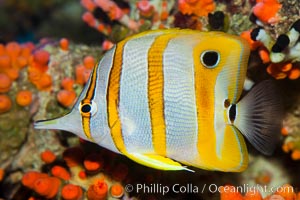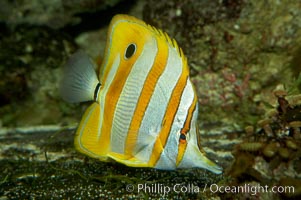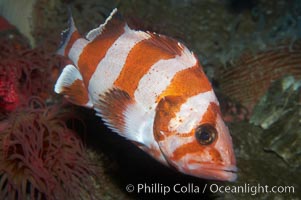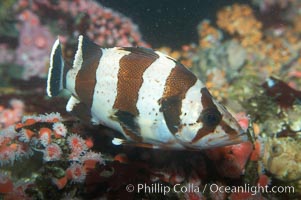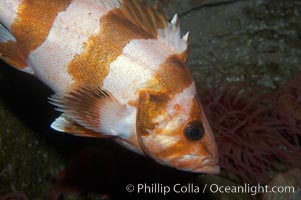
Humpback whale, abandoned calf alongside Hawaii Whale Research Foundation research boat. This young calf lived only a few days after being abandoned or separated from its mother, and was eventually attacked by tiger sharks.
Species: Humpback whale, Megaptera novaeangliae
Location: Maui, Hawaii
Image ID: 05983
Species: Humpback whale, Megaptera novaeangliae
Location: Maui, Hawaii
Image ID: 05983

Humpback whale, abandoned calf alongside Hawaii Whale Research Foundation research boat. This young calf lived only a few days after being abandoned or separated from its mother, and was eventually attacked by tiger sharks.
Species: Humpback whale, Megaptera novaeangliae
Location: Maui, Hawaii
Image ID: 05987
Species: Humpback whale, Megaptera novaeangliae
Location: Maui, Hawaii
Image ID: 05987

Humpback whale, abandoned calf alongside Hawaii Whale Research Foundation research boat. This young calf lived only a few days after being abandoned or separated from its mother, and was eventually attacked by tiger sharks.
Species: Humpback whale, Megaptera novaeangliae
Location: Maui, Hawaii
Image ID: 05992
Species: Humpback whale, Megaptera novaeangliae
Location: Maui, Hawaii
Image ID: 05992
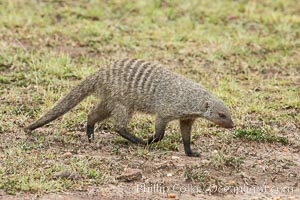
Banded mongoose, Maasai Mara, Kenya.
Species: Banded mongoose, Mungos mungo
Location: Maasai Mara National Reserve, Kenya
Image ID: 29847
Species: Banded mongoose, Mungos mungo
Location: Maasai Mara National Reserve, Kenya
Image ID: 29847

Banded mongoose, Maasai Mara, Kenya.
Species: Banded mongoose, Mungos mungo
Location: Olare Orok Conservancy, Kenya
Image ID: 29995
Species: Banded mongoose, Mungos mungo
Location: Olare Orok Conservancy, Kenya
Image ID: 29995

Grytviken whale station, abandoned storage tanks.
Location: Grytviken, South Georgia Island
Image ID: 24464
Location: Grytviken, South Georgia Island
Image ID: 24464

Banded mongoose, Maasai Mara, Kenya.
Species: Banded mongoose, Mungos mungo
Location: Maasai Mara National Reserve, Kenya
Image ID: 29846
Species: Banded mongoose, Mungos mungo
Location: Maasai Mara National Reserve, Kenya
Image ID: 29846

Zabriskie Point, sunrise. Manly Beacon rises in the center of an eroded, curiously banded area of sedimentary rock, with the Panamint Mountains visible in the distance.
Location: Zabriskie Point, Death Valley National Park, California
Image ID: 15575
Location: Zabriskie Point, Death Valley National Park, California
Image ID: 15575

Blue-banded goby, Catalina island.
Species: Bluebanded goby, Lythrypnus dalli
Location: Catalina Island, California
Image ID: 02346
Species: Bluebanded goby, Lythrypnus dalli
Location: Catalina Island, California
Image ID: 02346

Banded mongoose, Maasai Mara, Kenya.
Species: Banded mongoose, Mungos mungo
Location: Maasai Mara National Reserve, Kenya
Image ID: 29848
Species: Banded mongoose, Mungos mungo
Location: Maasai Mara National Reserve, Kenya
Image ID: 29848

Banded iguana, male. The bands of color on the male of this species change from green to either blue, grey or black, depending on mood. Females are usually solid green, ocassionally with blue spots or a few narrow bands.
Species: Banded iguana, Brachylophus fasciatus
Image ID: 12611
Species: Banded iguana, Brachylophus fasciatus
Image ID: 12611

Banded iguana, male. The bands of color on the male of this species change from green to either blue, grey or black, depending on mood. Females are usually solid green, ocassionally with blue spots or a few narrow bands.
Species: Banded iguana, Brachylophus fasciatus
Image ID: 12613
Species: Banded iguana, Brachylophus fasciatus
Image ID: 12613

Banded iguana, male. The bands of color on the male of this species change from green to either blue, grey or black, depending on mood. Females are usually solid green, ocassionally with blue spots or a few narrow bands.
Species: Banded iguana, Brachylophus fasciatus
Image ID: 12614
Species: Banded iguana, Brachylophus fasciatus
Image ID: 12614

Banded iguana, male. The bands of color on the male of this species change from green to either blue, grey or black, depending on mood. Females are usually solid green, ocassionally with blue spots or a few narrow bands.
Species: Banded iguana, Brachylophus fasciatus
Image ID: 12620
Species: Banded iguana, Brachylophus fasciatus
Image ID: 12620
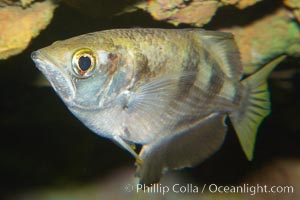
Banded archerfish. The banded archerfish is known for its ability to shoot down resting insects by spitting a jet of water. Large archerfishes can hit a target 2-3m away. Archerfishes have adaptations to the mouth which enable spitting. When a banded archerfish shoots a jet of water, it raises its tongue against the roof of the mouth forming a tube. The gill covers quickly close forcing water along the tube. This species mostly lives in mangrove and estuarine habitats throughout much of the Indo-Pacific.
Species: Banded archerfish, Toxotes jaculatrix
Image ID: 12902
Species: Banded archerfish, Toxotes jaculatrix
Image ID: 12902

Banded archerfish. The banded archerfish is known for its ability to shoot down resting insects by spitting a jet of water. Large archerfishes can hit a target 2-3m away. Archerfishes have adaptations to the mouth which enable spitting. When a banded archerfish shoots a jet of water, it raises its tongue against the roof of the mouth forming a tube. The gill covers quickly close forcing water along the tube. This species mostly lives in mangrove and estuarine habitats throughout much of the Indo-Pacific.
Species: Banded archerfish, Toxotes jaculatrix
Image ID: 12903
Species: Banded archerfish, Toxotes jaculatrix
Image ID: 12903

Banded archerfish. The banded archerfish is known for its ability to shoot down resting insects by spitting a jet of water. Large archerfishes can hit a target 2-3m away. Archerfishes have adaptations to the mouth which enable spitting. When a banded archerfish shoots a jet of water, it raises its tongue against the roof of the mouth forming a tube. The gill covers quickly close forcing water along the tube. This species mostly lives in mangrove and estuarine habitats throughout much of the Indo-Pacific.
Species: Banded archerfish, Toxotes jaculatrix
Image ID: 12904
Species: Banded archerfish, Toxotes jaculatrix
Image ID: 12904
